Plan Your Hair Transplant Around Life's Milestones
What to Expect After Your Hair Transplant
While a hair transplant offers a long-term answer to hair loss, the journey to visible results takes time. At FUE Hair Transplant London, we guide patients through every step of the recovery and regrowth process, helping you set realistic expectations from day one.
It’s essential to follow your surgeon’s aftercare instructions closely, as proper recovery plays a key role in achieving the best outcome. Full results can take over 12 months to develop, so patience is crucial. In the following guide, we outline a month-by-month timeline of typical hair growth after a transplant, so you can understand what progress to look for as your new hair takes shape.
Final Results Typically Visible Between 12 and 18 Months
Consultation
Treatment
1 Day
Recovery
1 Week
New hair growth
3 - 4 Months
Final results
12 - 18 Months
Understanding the hair growth cycle
Before we walk through the post-transplant recovery process, it helps to know how hair naturally grows and sheds. Hair follows a continuous cycle made up of four distinct phases. These stages are key to understanding what happens after a hair transplant:
-
Anagen (growth phase)
-
Catagen (transition phase)
-
Telogen (resting phase)
-
Exogen (shedding phase)
Let’s break down each phase:
Anagen Phase – The Growth Stage
This is the longest and most active phase of the cycle. Hair remains in anagen for between three and five years on average, though in some cases, it can last up to seven years. During this phase, the hair follicle is actively producing new hair, which continues to grow until it reaches the end of its natural lifespan. On the scalp, the anagen phase tends to last longer than it does for body or facial hair, which explains why scalp hair grows longer overall.
Catagen Phase – The Transition
Following the active growth of the anagen phase, hair enters a brief transitional stage known as catagen. This phase typically lasts around ten days. During this time, hair growth slows, and the follicles begin to shrink. Although the hair detaches from its blood supply, it remains anchored in the scalp for a short period. At any one time, only about 3 to 5 percent of hairs are in this phase.
Telogen Phase – The Resting Stage
After catagen comes telogen, a resting period that lasts approximately three months. The detached hairs stay in place while new hairs begin forming deep within the follicle. Around 10 to 15 percent of hairs are in the telogen stage at any given moment. Though the hair is no longer growing, it has not yet been shed.
Exogen Phase – Shedding and Renewal
Exogen is closely linked to the telogen phase and marks the point when hairs are released from the scalp. This stage lasts between two and five months. Shedding typically occurs during routine activities like brushing, washing, or sleeping. As older hairs fall away, new growth is already under way within the follicles, continuing the natural cycle of renewal.
Hair transplant after 7 days
To begin the recovery timeline, let us look at what typically happens in the immediate aftermath of an FUE hair transplant, particularly in the first seven days.
Both the donor area, where grafts are harvested, and the recipient area, where hair is implanted, will begin the healing process straight away. These zones are usually bandaged after the procedure, and it is common to feel some tenderness followed by itchiness as scabbing develops and eventually sheds. During this period, following your clinic’s aftercare guidance is essential for protecting your new hairline and supporting proper healing.
In the first week, you may use mild pain relief if needed to ease discomfort or help with sleep. When outdoors, wearing a protective hat or the head covering provided by your clinic will help shield your scalp from the sun, dust, and other environmental stressors.
Avoid washing your hair until advised. This is usually around five days after your procedure. Refrain from rubbing your scalp, scratching the treated areas, or drying your hair with towels. You should also avoid strenuous physical activity for at least two weeks to reduce the risk of disrupting the healing process.
The First Two Weeks After Your Hair Transplant
To begin the recovery timeline, let us look at what typically happens in the immediate aftermath of an FUE hair transplant, particularly in the first seven days.
Both the donor area, where grafts are harvested, and the recipient area, where hair is implanted, will begin the healing process straight away. These zones are usually bandaged after the procedure, and it is common to feel some tenderness followed by itchiness as scabbing develops and eventually sheds. During this period, following your clinic’s aftercare guidance is essential for protecting your new hairline and supporting proper healing.
In the first week, you may use mild pain relief if needed to ease discomfort or help with sleep. When outdoors, wearing a protective hat or the head covering provided by your clinic will help shield your scalp from the sun, dust, and other environmental stressors.
Avoid washing your hair until advised. This is usually around five days after your procedure. Refrain from rubbing your scalp, scratching the treated areas, or drying your hair with towels. You should also avoid strenuous physical activity for at least two weeks to reduce the risk of disrupting the healing process.
One Month After Your Hair Transplant
Around the one-month mark, you may begin to notice increased shedding in the recipient area. This happens as many of the newly transplanted hairs enter the resting stage of the growth cycle, known as telogen, before naturally falling out during the exogen phase. This shedding is entirely normal and expected as part of the recovery process.
Because each transplanted hair follows its own cycle, growth in the recipient area may appear uneven or patchy at this stage. This is nothing to worry about. In contrast, the donor area should already be showing signs of regrowth, with new hair starting to cover the area where grafts were taken.
If you notice ongoing redness, heat, or signs of inflammation that do not settle, it is a good idea to check in with your clinic for reassurance and support. However, the loss of transplanted hair at this point is not a setback. It is a natural and temporary step on the path to long-term growth.
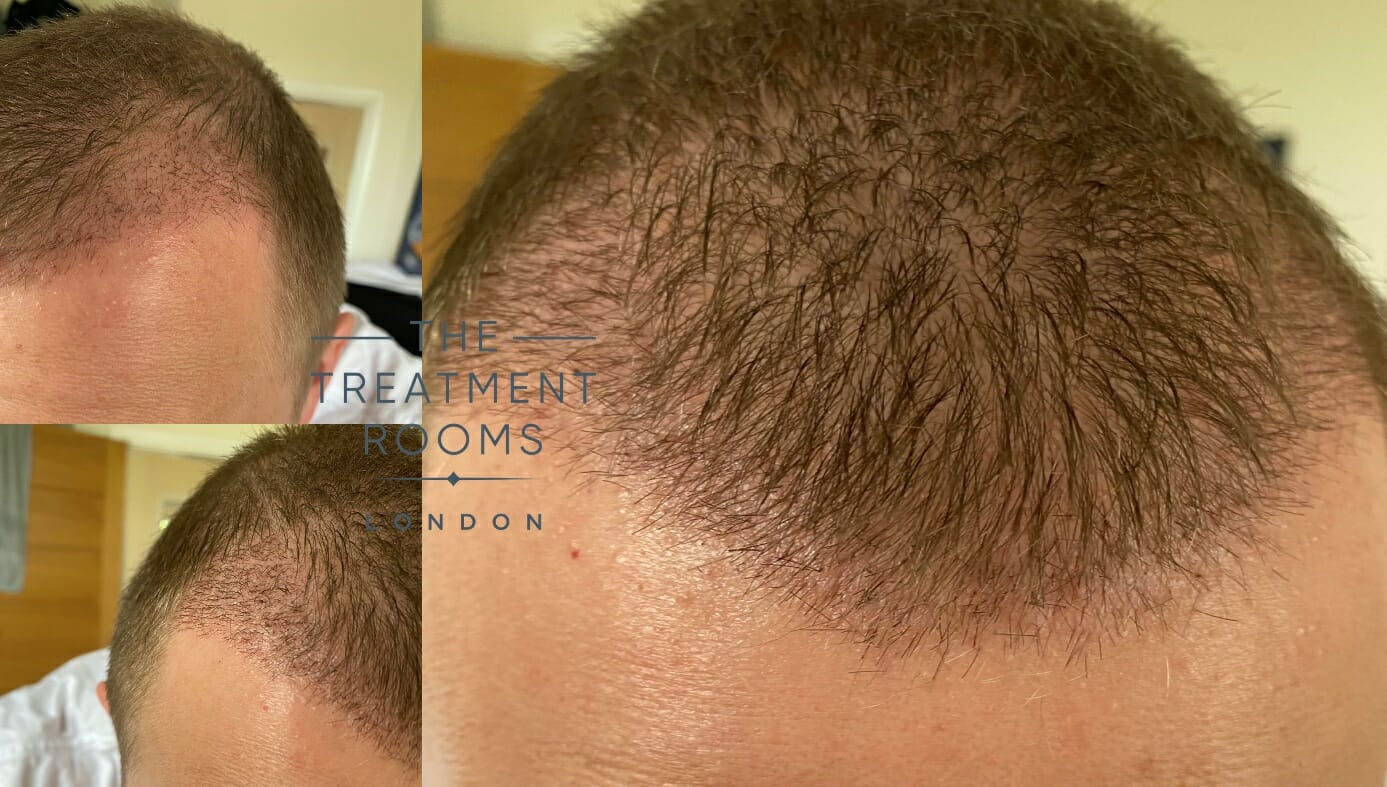
Two Months After Your Hair Transplant
By the two-month point, the shedding and growth cycle continues as described previously. The pace of progress will differ from one person to another, depending on individual healing and hair growth patterns.
It is important to stay patient during this stage. Patchy growth across the recipient area is completely normal. Each follicle is progressing through the hair growth cycle at its own rate, so some areas may look fuller than others. Although it may feel concerning, this variation is expected and is simply part of the recovery journey following a hair transplant.
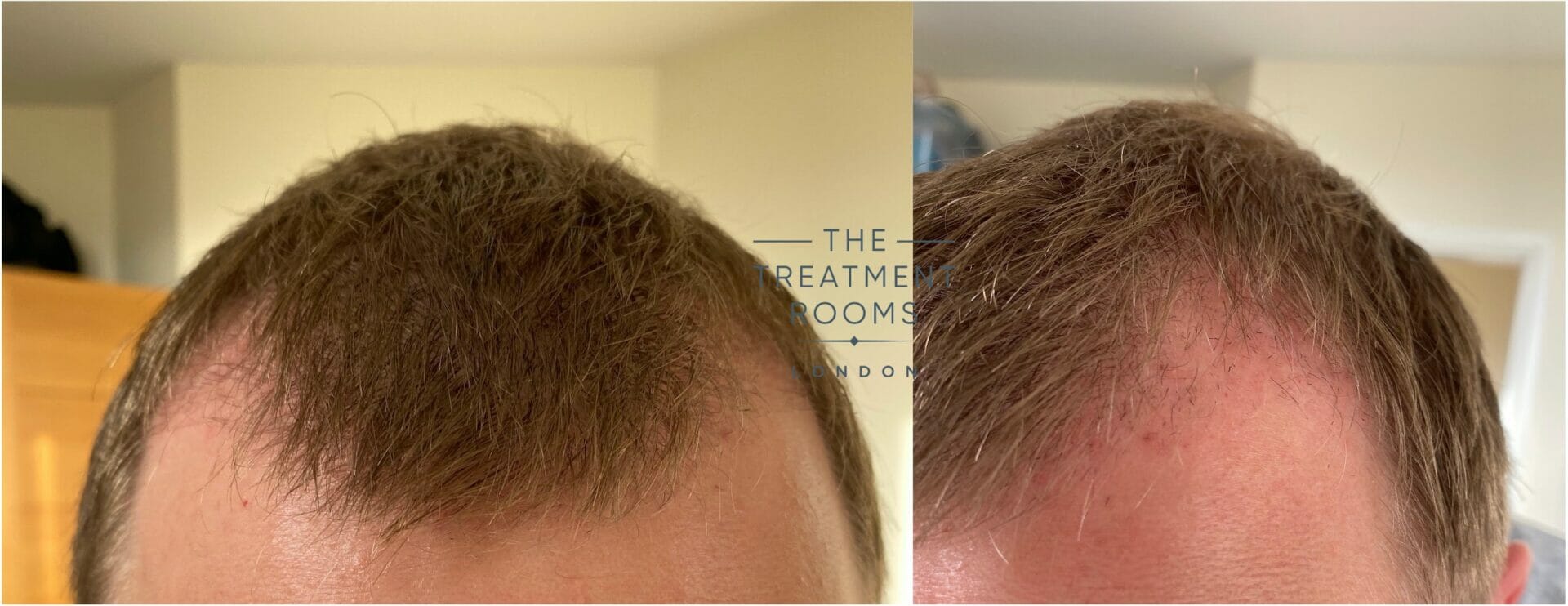
Three Months After Your Hair Transplant
At around the three-month stage, you will likely begin to see the first signs of new hair growth. These early hairs are often fine, soft, and lighter in colour, sometimes appearing almost transparent. This is completely normal and simply reflects the early stage of development.
It is important to remain patient as your hair continues to grow and mature. These initial strands may resemble body hair in texture, but over the coming months, they will gradually thicken and become more similar to the rest of your natural scalp hair. This marks a key turning point in the recovery process, but fuller results will still take time.
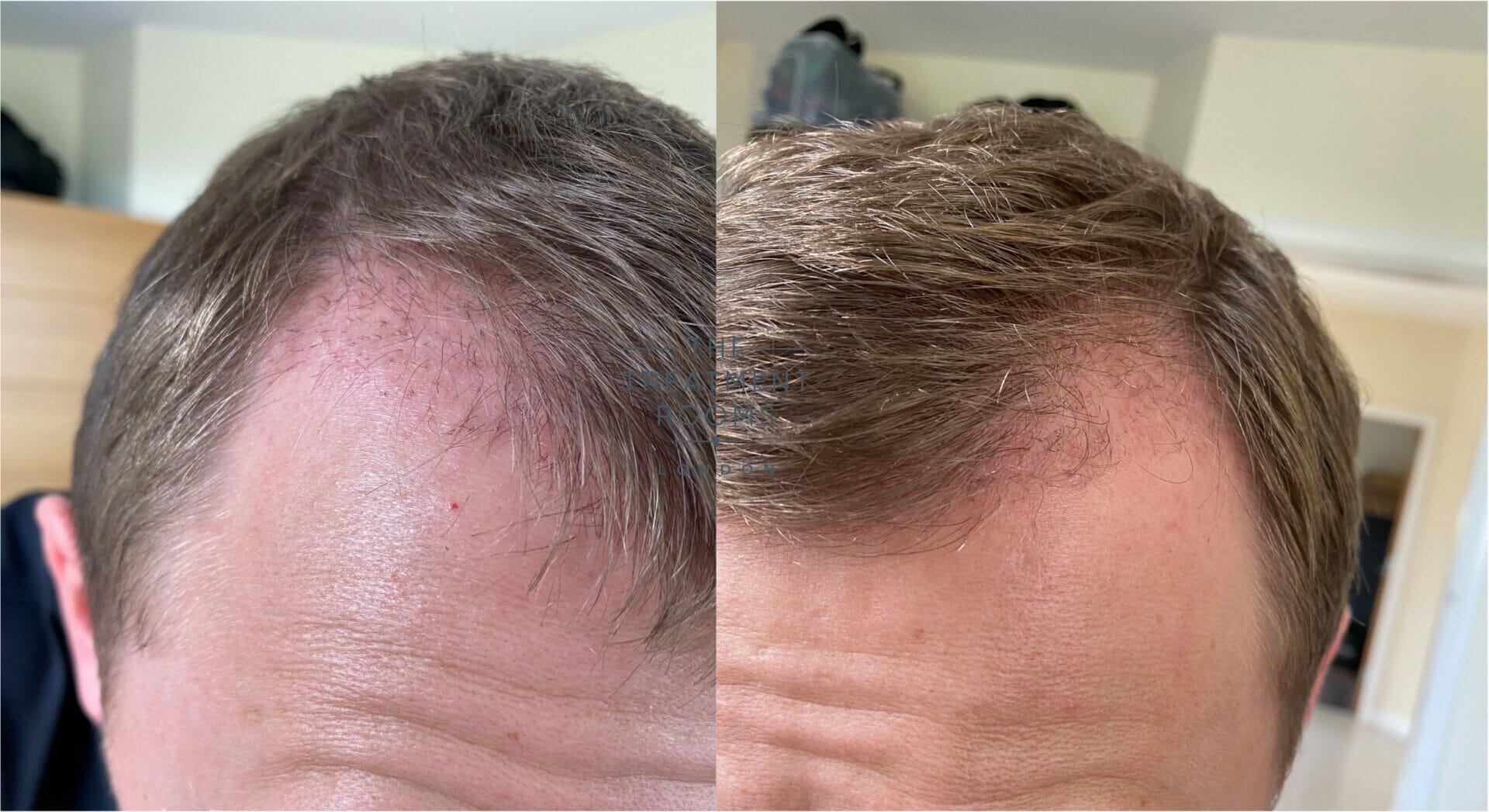
Six months after your hair transplant
At this point, you are likely beyond what some describe as the awkward early stage of recovery. You should start to see a noticeable improvement in both density and texture. New hairs will begin to look stronger and thicker, and this positive change will continue over the coming months.
It is important to keep in mind that growth varies from person to person. Factors such as the placement of the recipient area and the specific technique used can influence the speed and pattern of regrowth. Although progress is clearly visible by now, you should not expect to see the final result of your transplant just yet. That will take more time and further development.
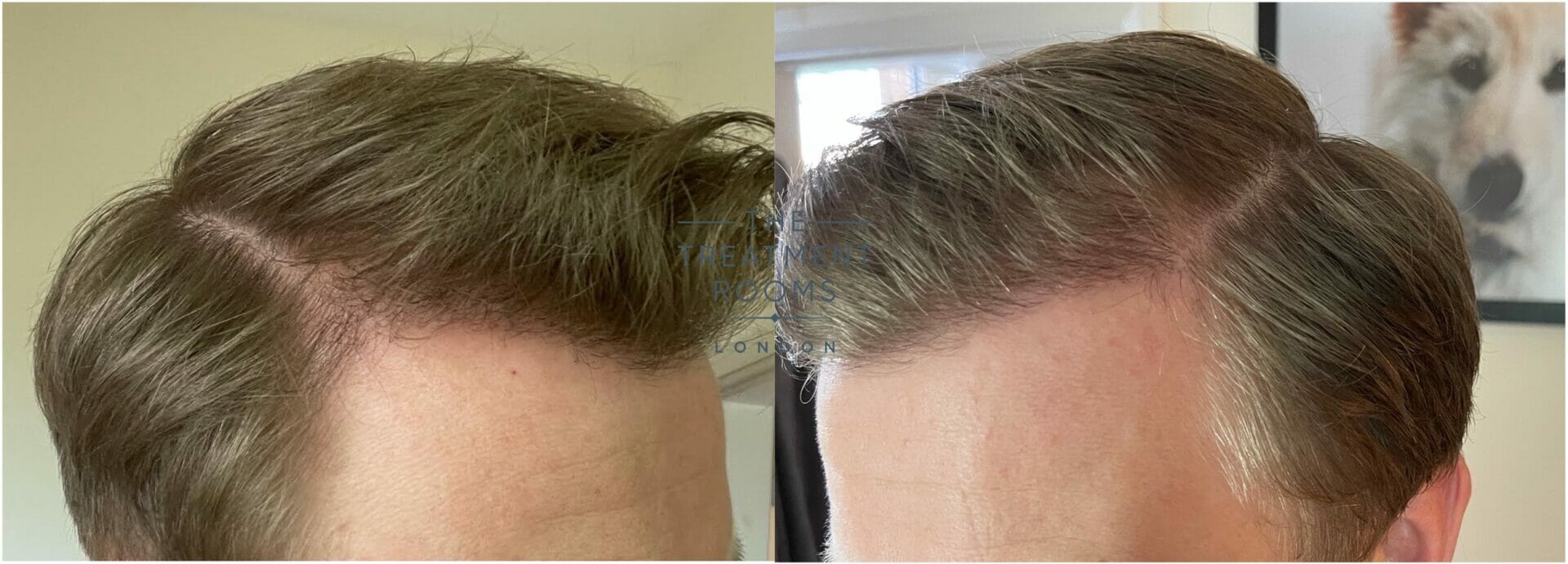
Nine to Twelve Months
Between months nine and twelve, most people experience a noticeable transformation in their hair transplant results. The new hair is typically much thicker, stronger, and more consistent across the treated area.
By this stage, growth is usually well established and styling becomes more versatile. While the majority of the change has already taken place, some individuals may continue to see gradual thickening and refinement during this period. For those with slower hair growth or larger treatment areas, final improvements may continue just beyond the twelve-month mark.
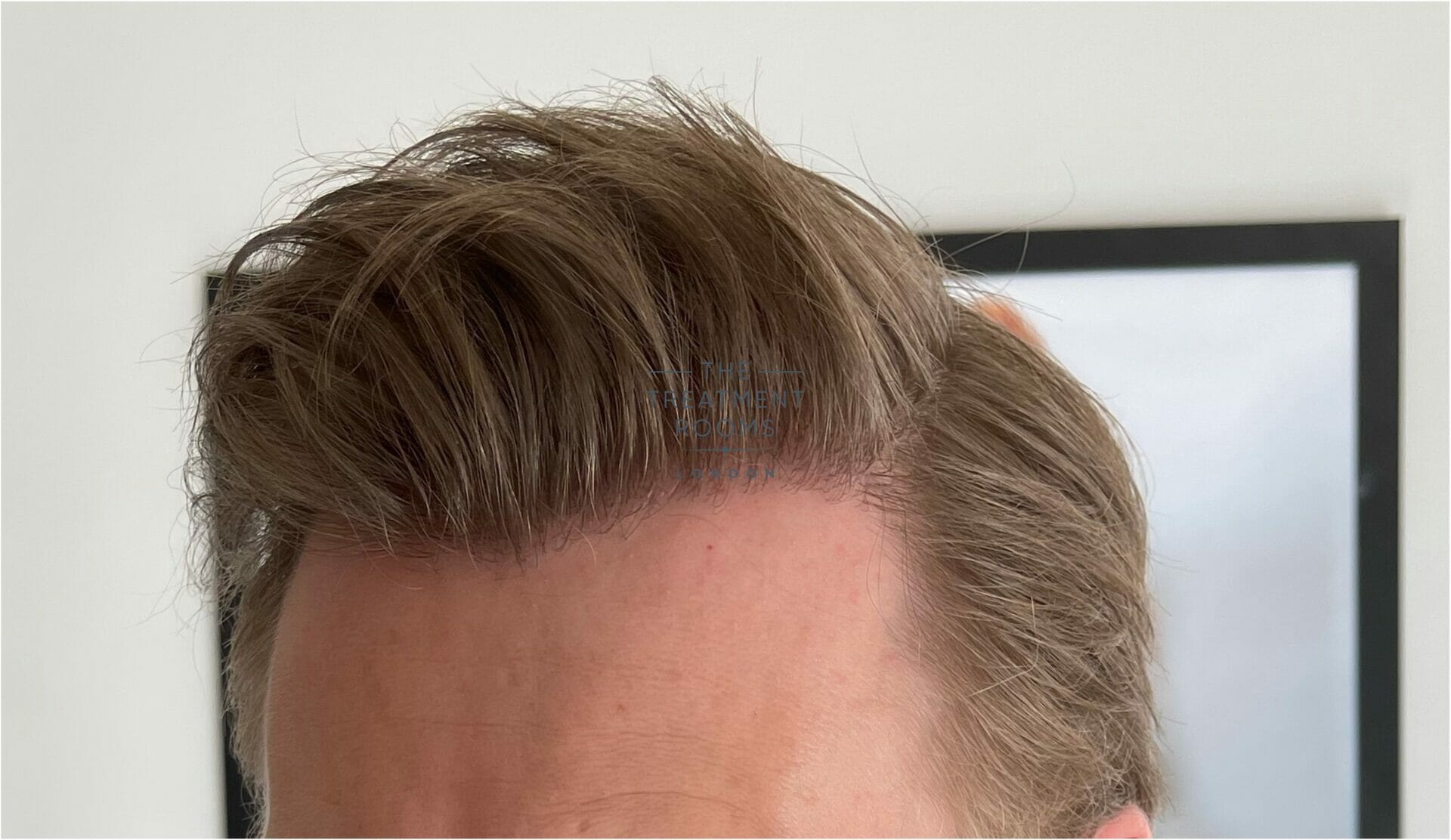
Twelve to Eighteen Months
Between one year and eighteen months after your hair transplant, you can expect to see the full and final result. By this stage, all transplanted hairs should have emerged, matured, and taken on their final texture and colour. The hair will typically appear fully thickened and natural in density.
At this point, you can enjoy your hair as you would in any normal situation. It can be styled, washed, and treated just like the rest of your natural hair, giving you long-lasting confidence in the outcome of your procedure.
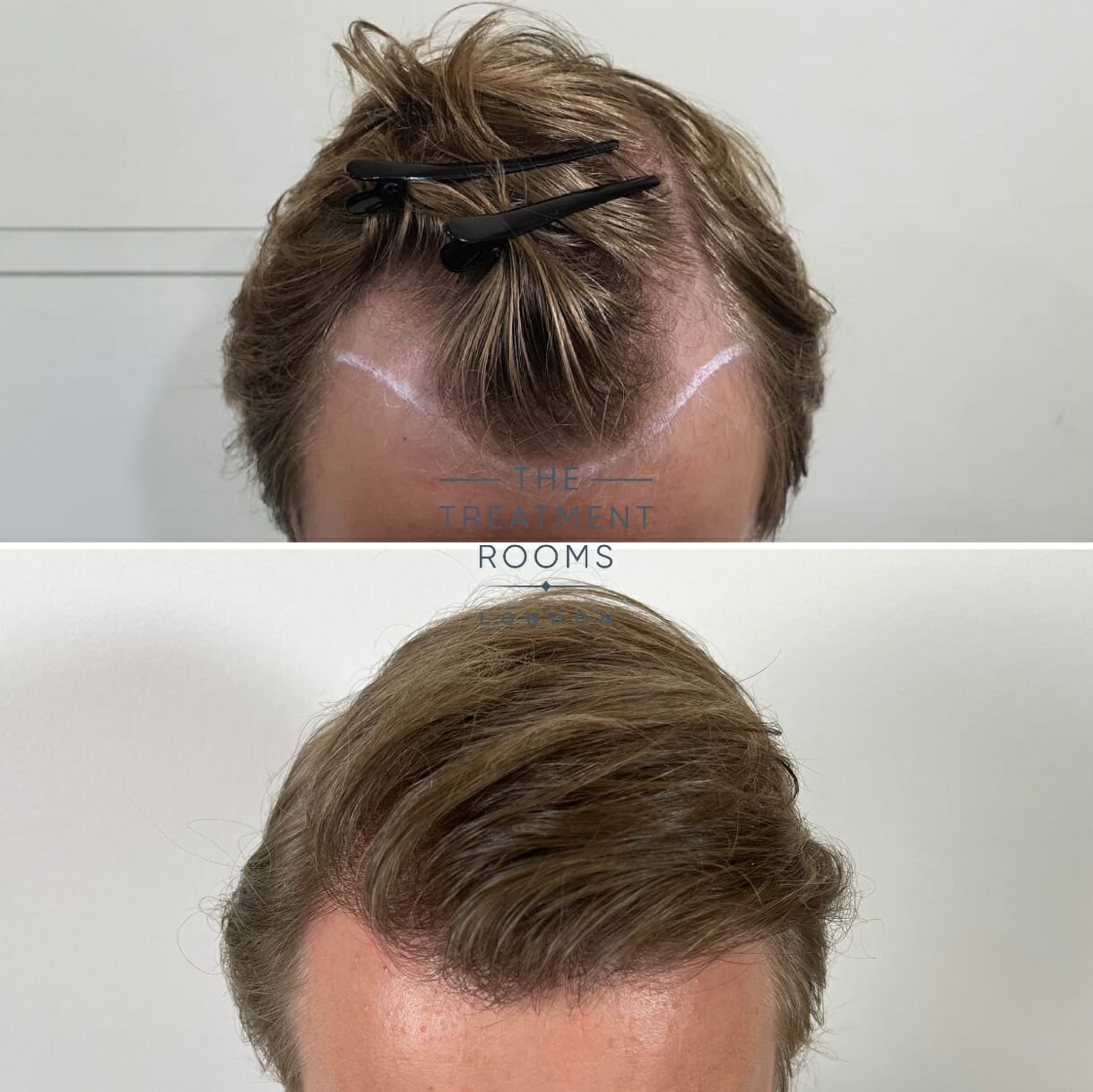
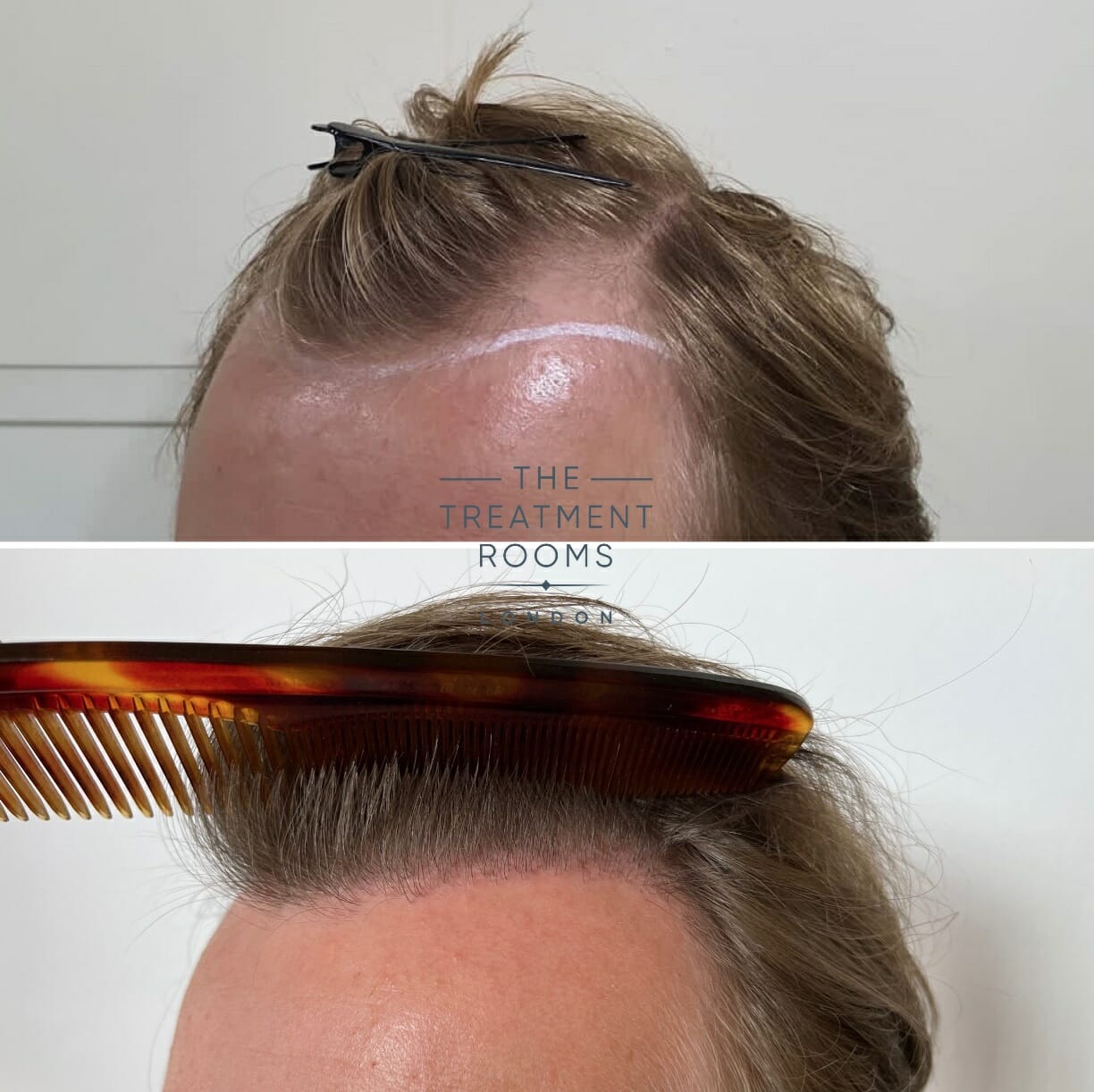
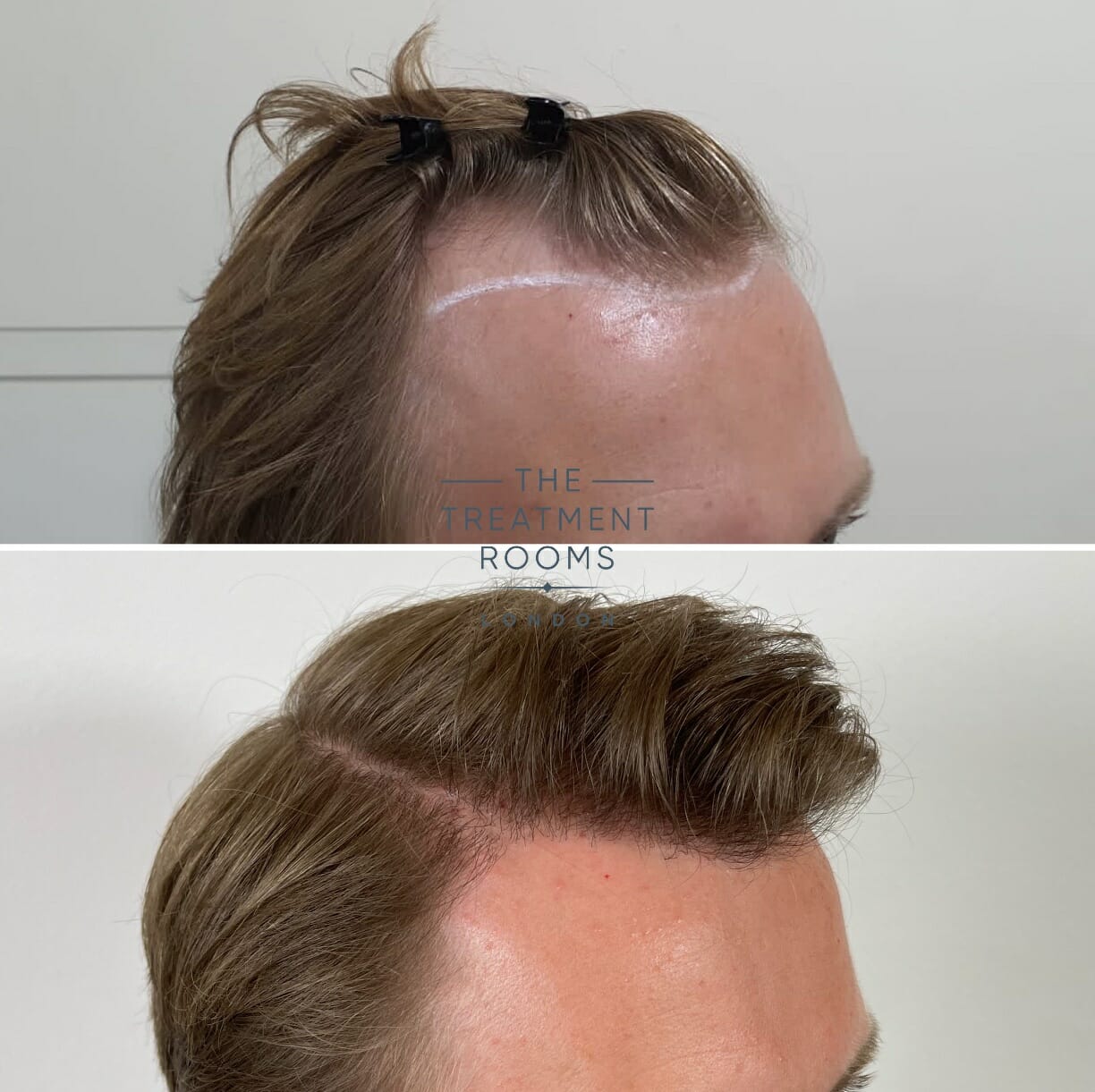
Book A Consultation

